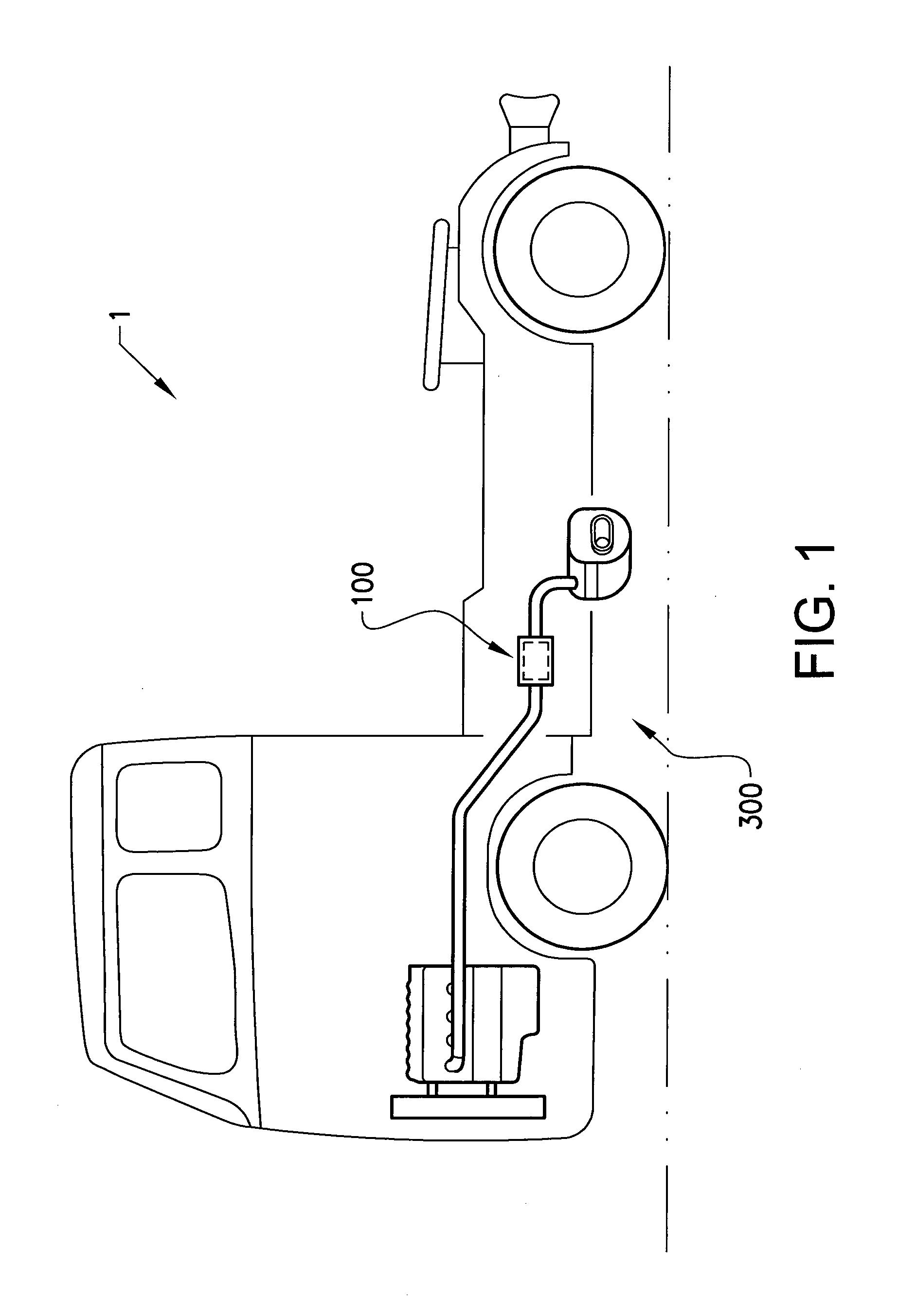System and method for determining a parameter indicative of an amount of a reducing agent
a technology of reducing agent and parameter, which is applied in the direction of engines, mechanical equipment, machines/engines, etc., can solve the problems of difficult catalytic reduction of nox emissions via conventional means in such systems, difficult to precisely control urea injection levels, and difficult to remove particles, so as to remove background noise, remove the influence of signal instability on the transmitter, and achieve more accurate results
- Summary
- Abstract
- Description
- Claims
- Application Information
AI Technical Summary
Benefits of technology
Problems solved by technology
Method used
Image
Examples
Embodiment Construction
[0169]The present invention will now be described more fully hereinafter with reference to the accompanying drawings, in which exemplary embodiments of the invention are shown. The invention may, however, be embodied in many different forms and should not be construed as limited to the embodiment set forth herein; rather, these embodiments are provided for thoroughness and completeness. Like reference character refer to like elements throughout the description.
[0170]Referring now to the drawings and to FIG. 1 in particular, there is depicted a vehicle including a system according to an example embodiment of the present invention. The vehicle 1 illustrated in FIG. 1 here further includes an internal combustion engine 300 producing an exhaust gas and an exhaust aftertreatment system 100. The vehicle 1 in FIG. 1 is provided in the form of a truck. The exhaust aftertreatment system 100 here is utilized for an internal combustion engine of the diesel type. Accordingly to the example embo...
PUM
 Login to view more
Login to view more Abstract
Description
Claims
Application Information
 Login to view more
Login to view more - R&D Engineer
- R&D Manager
- IP Professional
- Industry Leading Data Capabilities
- Powerful AI technology
- Patent DNA Extraction
Browse by: Latest US Patents, China's latest patents, Technical Efficacy Thesaurus, Application Domain, Technology Topic.
© 2024 PatSnap. All rights reserved.Legal|Privacy policy|Modern Slavery Act Transparency Statement|Sitemap



